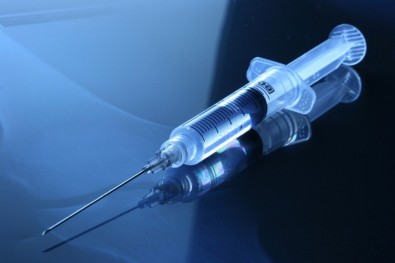It seems like we could have hundreds of millions of people worldwide with significant medical issues in the future because no one in authority checked a component of these drugs. They just handed it over to the manufacturers to deal with. It boiled down to the unknown effects of pseudouridine* used for the first time in mRNA COVID-19 vaccines.
*Two novel vaccine platforms, based on mRNA technology, were developed in 2020 by Pfizer-BioNTech and Moderna Therapeutics (comirnaty® and spikevax®, respectively), and were the first ones presenting efficacies higher than 90%. Both consisted of N1-methyl-pseudouridine-modified mRNA encoding the SARS-COVID-19 Spike protein and were delivered with a lipid nanoparticle (LNP) formulation. Because the delivery problem of ribonucleic acids had been known for decades, the success of LNPs was quickly hailed by many as the unsung hero of COVID-19 mRNA vaccines. However, the clinical trial efficacy results of the Curevac mRNA vaccine (CVnCoV) suggested that the delivery system was not the only key to the success. CVnCoV consisted of an unmodified mRNA (encoding the same spike protein as Moderna and Pfizer-BioNTech’s mRNA vaccines) and was formulated with the same LNP as Pfizer-BioNTech’s vaccine (Acuitas ALC-0315). However, its efficacy was only 48%. This striking difference in efficacy could be attributed to the presence of a critical RNA modification (N1-methyl-pseudouridine) in the Pfizer-BioNTech and Moderna’s mRNA vaccines (but not in CVnCoV). Here we highlight the features of N1-methyl-pseudouridine and its contributions to mRNA vaccines. (More here).
Most IMPORTANT thing in an mRNA v@x is to translate the code accurately otherwise you get garbage proteins which create garbage antibodies. The v@xs contain pseudouridine which significantly alter translation. What work was done?https://t.co/Z1V1jl2N3D
— Clucky (@Clucky92864053) December 31, 2021
AUSTRIAN RESEARCH GROUP PRESENTS ITS FINDINGS OF UNDECLARED COMPONENTS IN THE COVID-19 “VACCINES”
And in the UK: “The world renowned @MHRAgovuk did not test any sample of an mRNA #covidvaccine. All they did was hold it up to the light. Then asked Pfizer and AstraZeneca whether to pass it.”
Holy crap they have admitted it!
— Jikky Kjj (@JikkyKjj) December 27, 2021
The world renowned @MHRAgovuk did not test any sample of an mRNA #covidvaccine.
All they did was hold it up to the light. Then asked Pfi zer and AZ whether to pass it.
Told you so. They never knew what they were doing. pic.twitter.com/5rGcZ4oVYO
Medical Abstract
A stop or nonsense codon is an in-frame triplet within a messenger RNA that signals the termination of translation. One common feature shared among all three nonsense codons (UAA, UAG, and UGA) is a uridine present at the first codon position. It has been recently shown that the conversion of this uridine into pseudouridine (Ψ) suppresses translation termination, both in vitro and in vivo. Furthermore, decoding of the pseudouridylated nonsense codons is accompanied by the incorporation of two specific amino acids in a nonsense codon-dependent fashion. Ψ differs from uridine by a single N¹H group at the C5 position; how Ψ suppresses termination and, more importantly, enables selective decoding is poorly understood. Here, we provide molecular rationales for how pseudouridylated stop codons are selectively decoded. Our analysis applies crystal structures of ribosomes in varying states of translation to consider weakened interaction of Ψ with release factor; thermodynamic and geometric considerations of the codon-anticodon base pairs to rank and to eliminate mRNA-tRNA pairs; the mechanism of fidelity check of the codon-anticodon pairing by the ribosome to evaluate noncanonical codon-anticodon base pairs and the role of water. We also consider certain tRNA modifications that interfere with the Ψ-coordinated water in the major groove of the codon-anticodon mini-helix. Our analysis of nonsense codons enables prediction of potential decoding properties for Ψ-modified sense codons, such as decoding ΨUU potentially as Cys and Tyr. Our results provide molecular rationale for the remarkable dynamics of ribosome decoding and insights on possible reprogramming of the genetic code using mRNA modifications.
Here: https://pubmed.ncbi.nlm.nih.gov/22282339/
